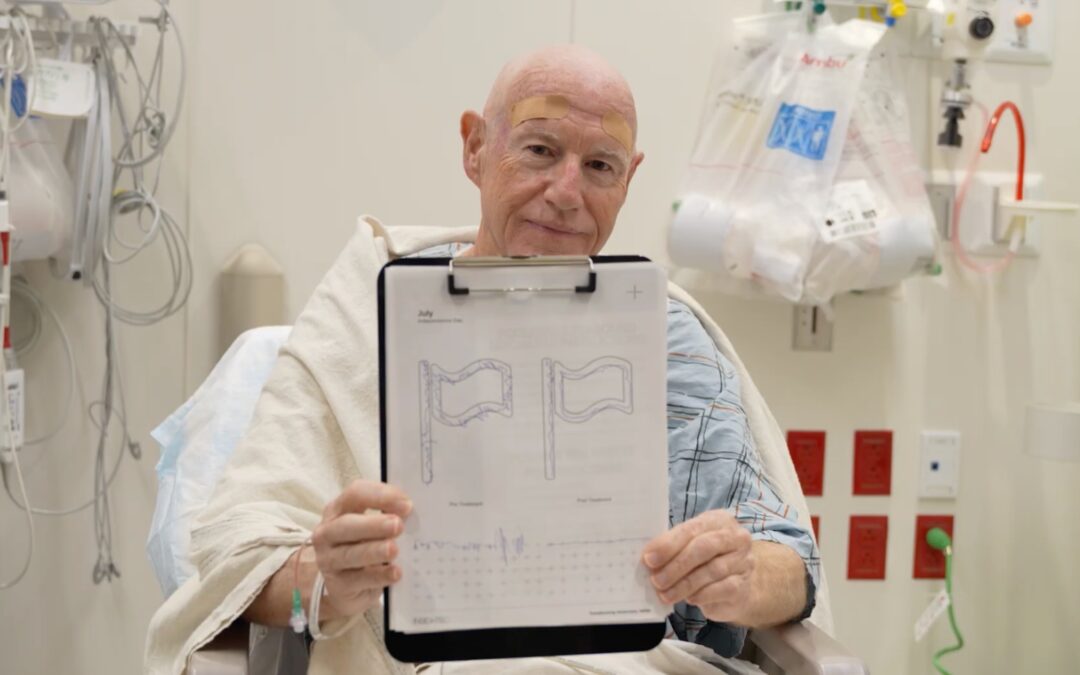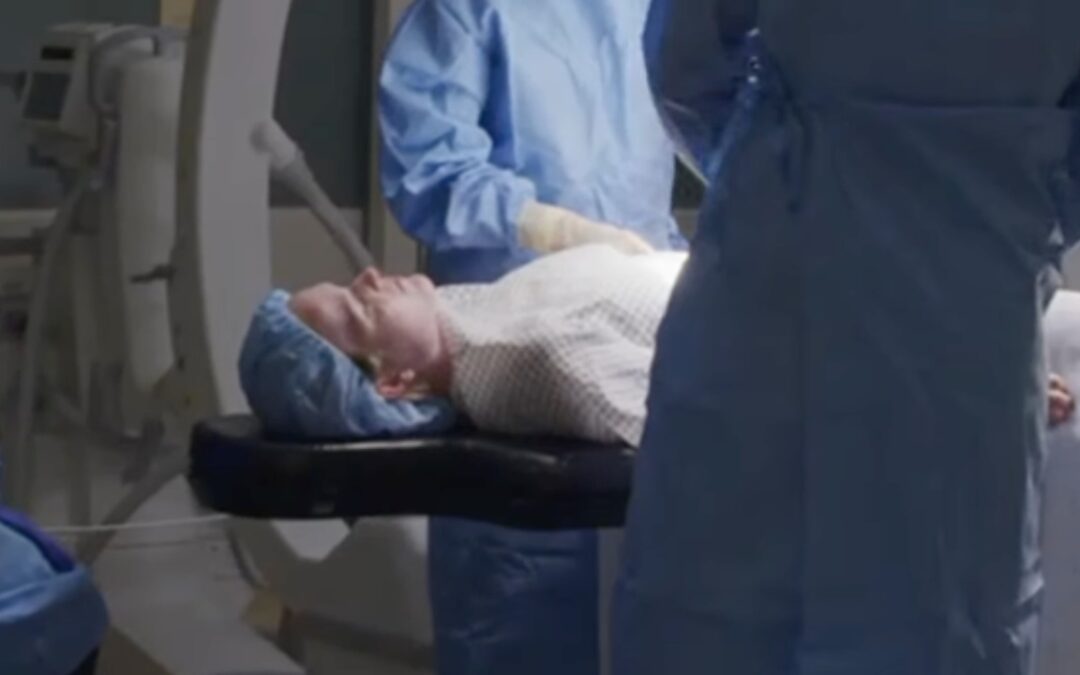Skull Base Surgery: Advanced Treatment Options in New Jersey
Skull base surgery addresses conditions in the intricate area at the bottom of the skull, where the brain meets critical structures like major blood vessels; cranial nerves controlling vision, hearing, and facial movement; and pathways connecting to the spine.
At New Jersey Brain and Spine, we offer comprehensive skull base neurosurgery using both advanced minimally invasive endoscopic techniques and traditional open approaches, providing patients throughout New Jersey and the surrounding region with access to world-class care close to home.
Understanding the Skull Base: Complex Anatomy at the Foundation of the Brain
The skull base is the bony platform at the bottom of the skull that supports the brain and separates it from the face and neck structures. This region is incredibly complex, with numerous openings (called foramina) through which critical structures pass, including the optic nerves that enable vision, the carotid arteries supplying blood to the brain, the brainstem connecting the brain to the spinal cord, the pituitary gland regulating hormones throughout the body, and the cranial nerves controlling eye movement, facial sensation and movement, hearing, balance, taste, and swallowing.
Because so many vital structures are concentrated in such a small space, conditions affecting the skull base can cause diverse symptoms and require highly specialized surgical expertise. Tumors or other lesions in this region can compress nerves causing vision loss, hearing problems, or facial weakness, obstruct cerebrospinal fluid pathways leading to hydrocephalus, erode bone causing structural problems or cerebrospinal fluid (CSF) leaks, or involve critical blood vessels creating vascular complications.
The complexity of skull base anatomy means that surgery in this region demands not only technical precision but also deep understanding of the relationships between structures and how surgical approaches can access pathology while minimizing disruption to normal anatomy.
Conditions Treated with Skull Base Surgery
Skull base surgery addresses a wide range of benign and malignant conditions. Understanding which conditions require skull base surgery can help you recognize when specialized evaluation is needed. Common conditions treated with skull base surgery include:
Benign Skull Base Tumors
- Meningiomas: These tumors arise from the membranes covering the brain and frequently occur at the skull base. While benign, they can cause serious symptoms by compressing the brain, cranial nerves, or blood vessels. Skull base meningiomas often require specialized approaches to achieve complete removal while preserving neurological function.
- Acoustic Neuromas (Vestibular Schwannomas): These benign tumors grow on the hearing and balance nerve, causing hearing loss, tinnitus, balance problems, and potentially facial weakness. Surgical removal through skull base approaches can often preserve facial nerve function and sometimes hearing.
- Pituitary Adenomas: These common tumors of the pituitary gland can cause hormone imbalances or vision problems by compressing the optic nerves. Most are treated through minimally invasive endoscopic approaches through the nose.
Malignant Tumors
- Skull base surgery may be necessary for treating malignant tumors including sinonasal cancers that extend to the skull base, metastatic tumors from other cancers, and aggressive primary brain tumors involving the skull base region. These cases often require multidisciplinary coordination with medical and radiation oncologists.
Vascular Conditions
- Certain aneurysms and arteriovenous malformations located at the skull base may require specialized surgical approaches for definitive treatment, particularly when endovascular methods are not feasible or have been unsuccessful.
Other Conditions
- CSF leaks
- Encephaloceles
- Trigeminal neuralgia
- Complex trauma or infections involving the skull base.
For more information about conditions we treat, visit our neuro-oncology and skull-base surgery page.
Surgical Approaches: Minimally Invasive and Open Techniques
Modern skull base neurosurgery encompasses multiple surgical approaches, each suited to different conditions and anatomical locations. At New Jersey Brain and Spine, our fellowship-trained surgeons specialize in both minimally invasive and traditional open techniques, allowing us to select the optimal approach for each patient’s unique situation.
Endoscopic Skull Base Surgery in New Jersey
Endoscopic skull base surgery represents one of the most significant advances in neurosurgery in recent decades. This minimally invasive approach accesses the skull base through natural openings — primarily the nose and sometimes the mouth — eliminating the need for facial or scalp incisions. Using high-definition endoscopes and specialized instruments, surgeons can visualize and remove tumors or repair defects through these natural corridors.
Key Advantages of Endoscopic Approaches:
- No external incisions or visible scars
- Reduced pain and faster recovery
- Shorter hospital stays
Endoscopic skull base surgery is particularly effective for pituitary tumors, many meningiomas at the skull base, CSF leak repairs, certain craniopharyngiomas, chordomas and chondrosarcomas (when accessible), and selected malignant tumors with appropriate anatomy.
Open Skull Base Surgery
For larger tumors extending beyond the reach of endoscopic approaches, or cases requiring extensive bone removal or reconstruction, traditional open skull base surgery remains essential. These approaches may involve craniotomy (opening the skull from above), combined approaches accessing the skull base from multiple directions, or bone removal and reconstruction procedures.
While open surgery requires longer recovery, modern techniques have significantly reduced invasiveness compared to historical approaches. Advanced surgical planning, precise bone work, careful preservation of critical structures, and sophisticated reconstruction methods have improved outcomes and shortened recovery times.
Technological Advances Enhancing Outcomes
Modern skull base surgery benefits from remarkable technological innovations including intraoperative neuronavigation systems that function like GPS for the brain, providing real-time guidance, high-definition endoscopes with angled lenses allowing “around corner” visualization, intraoperative MRI and CT imaging to verify complete tumor removal, comprehensive neurophysiological monitoring protecting cranial nerves during surgery, and 3D imaging and surgical planning that allow “virtual surgery” before the actual procedure.
These technologies, combined with surgical expertise, have dramatically improved safety and effectiveness of skull base procedures.
What to Expect: Preparation, Procedure, and Recovery
Understanding the skull base surgery journey from diagnosis through recovery can help you prepare mentally and practically for this experience.
Preoperative Preparation
Thorough preparation is essential for optimal outcomes. Your evaluation may include comprehensive imaging with MRI, CT scans, and sometimes MR angiography or cerebral angiography to map vascular anatomy. For highly vascular tumors, preoperative embolization (blocking tumor blood supply) may be performed.
Medical optimization ensures you’re in the best possible condition for surgery, which may include adjusting medications, managing chronic conditions, and sometimes working with other specialists. You’ll receive detailed instructions about which medications to stop before surgery, fasting requirements, and what to bring to the hospital.
During Surgery
The duration of skull base surgery varies significantly based on approach and complexity. Throughout surgery, you’re under general anesthesia and monitored continuously by specialized neuroanesthesia teams.
Throughout the procedure, sophisticated monitoring tracks the function of cranial nerves and other critical structures, allowing surgeons to work safely near these vital areas.
Recovery and Hospital Stay
Recovery timelines vary significantly based on surgical approach. For minimally invasive endoscopic skull base surgery, many patients experience surprisingly rapid recovery.
For open skull base procedures, hospital stays typically range from 3-10 days depending on complexity. You’ll spend initial time in intensive care for close monitoring, then transition to a regular room as you recover.
Long-Term Recovery
Most patients undergoing endoscopic approaches return to light activities within 2-3 weeks and normal activities within 4-6 weeks. Open approaches typically require 6-12 weeks for substantial recovery, with continued improvement over several months. Rehabilitation needs depend on which structures were affected — some patients need vision therapy, hearing rehabilitation, speech and swallowing therapy, or facial retraining exercises.
Follow-up care includes regular imaging (typically MRI) to monitor for tumor recurrence, endocrine evaluation for pituitary surgery patients, and ongoing assessment of cranial nerve function. Our team remains involved in your care long-term, ensuring optimal outcomes and addressing any concerns that arise.
Understanding Risks and Complications
Like all neurosurgery, skull base procedures carry risks that must be carefully considered. However, modern techniques and experienced surgical teams have significantly improved safety profiles.
Potential Complications Include:
- CSF leak
- Cranial nerve injury
- Bleeding
- Infection
- Hormonal dysfunction
- Stroke
At New Jersey Brain and Spine, our complication rates compare favorably to national benchmarks, reflecting our surgical expertise, advanced technology, and comprehensive perioperative care protocols.
Why Choose Skull Base Surgery in New Jersey at New Jersey Brain and Spine
When facing skull base surgery, choosing the right surgical team significantly impacts your outcome. Here’s what distinguishes our New Jersey practice:
Specialized Skull Base Expertise
Our neurosurgeons have completed fellowship training specifically in skull base surgery and regularly perform these complex procedures. This specialized expertise, gained through years of additional training and hundreds of cases, translates directly into better outcomes for our patients.
Multidisciplinary Team Approach
Complex skull base cases require collaboration among multiple specialists. Our multidisciplinary skull base team includes fellowship-trained neurosurgeons, specialized ENT/head and neck surgeons, plastic and reconstructive surgeons for complex closures, neuro-ophthalmologists for vision preservation, endocrinologists for pituitary cases, and radiation and medical oncologists for malignant tumors. This collaborative approach ensures comprehensive evaluation and optimal treatment planning.
Advanced Technology and Techniques
We invest continuously in the latest technology including state-of-the-art endoscopic equipment, intraoperative navigation systems, comprehensive neuromonitoring capabilities, and access to intraoperative imaging. These tools enhance safety and effectiveness while enabling minimally invasive approaches when appropriate.
Local Access to World-Class Care
Patients throughout New Jersey and the surrounding region can access specialized skull base neurosurgery close to home without traveling to distant academic centers. Our convenient locations make it easier for families to be present during treatment and simplify follow-up care.
When to Seek Care from a Skull Base Specialist in New Jersey at New Jersey Brain and Spine
Recognizing when skull base evaluation is needed can significantly impact outcomes. Seek evaluation from a skull base specialist if you experience:
- Vision changes: New onset double vision, vision loss, or visual field defects
- Hearing problems: Progressive hearing loss, persistent ringing in ears, or sudden hearing changes
- Facial symptoms: Numbness, weakness, or paralysis affecting the face
- Persistent headaches: Especially headaches that worsen over time or have unusual characteristics
- Balance issues: New or worsening dizziness, vertigo, or coordination problems
- CSF leak: Clear, watery fluid draining from nose or ears, particularly after head trauma or sinus surgery
- Hormonal problems: Unexplained hormone imbalances, particularly with visual symptoms
- Nasal obstruction: Persistent one-sided nasal blockage, especially with bloody discharge
Early evaluation is crucial because many skull base conditions are more successfully treated when addressed promptly. If you’re experiencing symptoms, don’t delay seeking expert evaluation.
Moving Forward with Confidence
Facing skull base surgery is challenging, but modern neurosurgical techniques offer unprecedented opportunities for successful treatment with preserved quality of life. The combination of specialized expertise, advanced technology, and comprehensive multidisciplinary care available at centers like ours in New Jersey means that patients can approach these procedures with realistic optimism.
Whether you’re dealing with a newly diagnosed skull base tumor, experiencing symptoms that concern you, or seeking a second opinion about treatment recommendations, our team is here to provide expert guidance and compassionate care.
Contact New Jersey Brain and Spine today to schedule a consultation with our skull base surgery team. Let us provide the expert evaluation, advanced treatment options, and comprehensive support you deserve. Our convenient New Jersey locations make world-class skull base neurosurgery accessible when you need it most.








